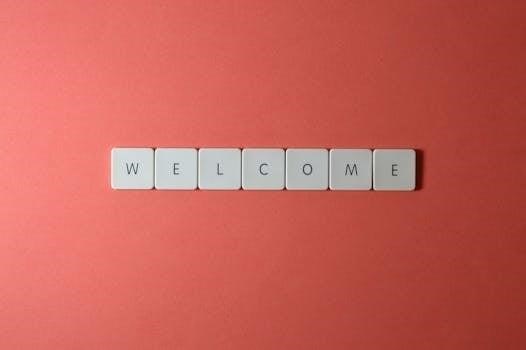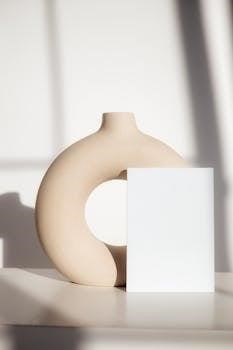a field guide to the mammals of australia
Australia’s unique mammals, from kangaroos to koalas, captivate global interest. This guide provides essential insights into their diversity, helping readers explore and understand these fascinating creatures effectively.
Overview of Australian Mammals
Australia is home to a diverse range of mammals, including iconic marsupials like kangaroos, koalas, and wombats, as well as unique bats, dasyurids, and monotremes. With over 379 species, the country boasts a fascinating array of native and introduced mammals. Marsupials dominate the landscape, while bats and rodents contribute to the ecological balance. Introduced species, such as foxes and feral cats, have significantly impacted local ecosystems. This guide provides a comprehensive overview, highlighting the unique characteristics, habitats, and behaviors of Australia’s mammalian fauna, ensuring readers gain a deeper understanding of these remarkable animals and their role in the environment. Conservation efforts are vital to protect these species and their habitats.
Importance of a Field Guide
A field guide is an indispensable tool for identifying and understanding Australia’s diverse mammal species. It provides detailed descriptions, diagnostic features, and distribution maps, enabling accurate identification in the field. For researchers, enthusiasts, and conservationists, it serves as a vital reference, bridging the gap between scientific knowledge and practical observation. By highlighting key characteristics and habitats, a field guide fosters a deeper appreciation of Australia’s unique fauna. It also plays a crucial role in conservation by raising awareness of threatened species and their environments, encouraging informed action to protect these invaluable creatures and their ecosystems for future generations.

How to Use This Field Guide
This guide helps you identify Australian mammals using detailed species accounts, plates, and identification keys. Start with field characters, then refine your search using the keys provided for accurate results.
Understanding Field Characters
Field characters are the key features used to identify mammals in their natural environment. These include fur color, ear shape, tail length, and body size. By observing these traits, you can narrow down species quickly. Diagnostic features like pouch presence or claw type are crucial for marsupials. Pay attention to behavioral clues, such as hopping for kangaroos or climbing for possums. This section provides detailed descriptions and images to help you recognize these characters, ensuring accurate identification. Understanding field characters is the first step in effectively using this guide to identify Australian mammals in the wild or through observations. This knowledge enhances your fieldwork and conservation efforts significantly.
Using Identification Keys
Identification keys are systematic tools designed to help you determine the species of a mammal by answering a series of questions about its characteristics. Start with broad traits, such as size, fur color, or ear shape, and progress to more specific features. Each question narrows down the possibilities, guiding you toward the correct species. Pay attention to diagnostic features like teeth structure or tail length, as these are often critical. For challenging groups, such as bats or rodents, detailed keys are provided to ensure accuracy. By following the key step-by-step, you can confidently identify even the most similar species. Practice and familiarity with field characters will enhance your efficiency in using these keys effectively.
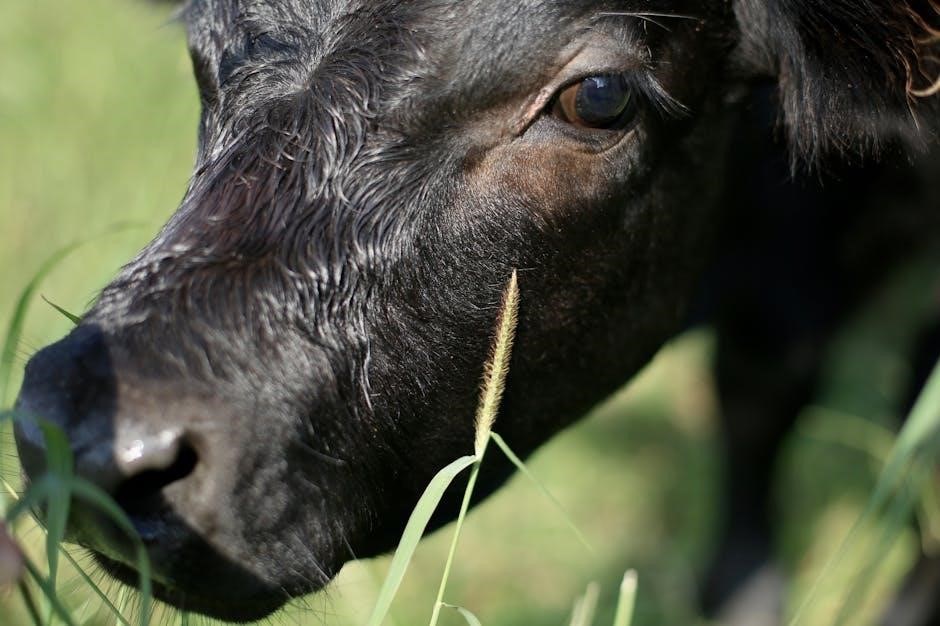
Marsupials of Australia
Australia is home to a diverse range of marsupials, including kangaroos, koalas, wombats, and possums, each with unique adaptations and characteristics that set them apart from other mammals.
Kangaroos and Wallabies
Kangaroos and wallabies are iconic Australian marsupials, known for their powerful hopping and distinctive pouches. These grazing herbivores are highly adapted to Australia’s varied landscapes, from open grasslands to woodlands. Kangaroos are larger, with robust frames, while wallabies are smaller and more agile, often inhabiting denser vegetation. Both exhibit strong hind legs and sharp claws for movement and defense. Their social behavior varies, with kangaroos forming large mobs and wallabies often living singly or in small groups. Field identification relies on size, fur color, and facial markings. This guide provides detailed descriptions to help distinguish between species, ensuring accurate identification in the wild.
Koalas
Koalas are iconic Australian marsupials, recognized by their stocky build and distinctive fur. These arboreal herbivores primarily inhabit eastern Australia’s eucalyptus forests. Koalas are nocturnal, spending most of their time resting or feeding on eucalyptus leaves, which are toxic to many animals. Their thick, woolly fur and clawed limbs adapt them to their tree-dwelling lifestyle. Field identification is aided by their rounded ears, white facial markings, and robust size. Juvenile koalas, called joeys, cling to the mother’s pouch for several months. This guide provides detailed descriptions of their appearance, behavior, and habitat preferences, helping enthusiasts accurately identify koalas in their natural environment.
Wombats
Wombats are robust, burrowing marsupials native to southeastern Australia. They are easily recognized by their sturdy bodies, strong legs, and distinctive cube-shaped scat. These herbivores feed on grasses, roots, and vegetation. Wombats are primarily nocturnal, spending most of their time in underground burrows. The common wombat and southern hairy-nosed wombat are the most widespread species. Their thick fur and powerful digging claws adapt them to their subterranean lifestyle. In the wild, wombats can be challenging to spot due to their nocturnal habits and burrowing behavior. This guide provides detailed descriptions of their appearance, habitat preferences, and behaviors, aiding enthusiasts in identifying wombats during field observations.
Possums
Possums are a diverse group of marsupials found throughout Australia, ranging in size from the tiny pygmy possums to the larger brushtail and ringtail species. These arboreal mammals are well adapted to life in trees, with strong claws and prehensile tails. Possums are primarily herbivores, feeding on leaves, fruits, and flowers. Many species are nocturnal, making them challenging to observe, but their large eyes and vocal calls can aid in identification. This guide provides detailed descriptions of possum species, including their habitats, behaviors, and distinguishing features, helping field enthusiasts accurately identify these fascinating creatures in their natural environments.

Bilbies and Bandicoots
Bilbies and bandicoots are iconic Australian marsupials known for their distinctive appearances and unique behaviors. Bilbies, with their striking stripes, are desert-dwelling nocturnal mammals, while bandicoots are more varied, ranging from small, insectivorous species to larger, omnivorous forms. These animals are characterized by their pointed snouts, strong hind legs, and ability to forage efficiently. Bilbies are often elusive, but their large ears and powerful digging skills make them well-suited to arid environments. Bandicoots, on the other hand, are found across diverse habitats, from forests to grasslands. Both groups face threats from introduced predators, making conservation efforts essential to protect these fascinating creatures and their habitats.
Placental Mammals
Placental mammals in Australia include native species like seals and introduced animals such as rodents, bats, and carnivores, showcasing their diversity and adaptability across habitats.
Placental mammals in Australia are a diverse group, primarily comprising introduced species such as rodents, bats, and carnivores. Native species like seals and sea lions also exist. These mammals are characterized by their ability to give birth to well-developed young and nurse them with true teeth. Introduced placental mammals have significantly impacted local ecosystems, often outcompeting native species. This section explores their unique characteristics, ecological roles, and the challenges they present to Australian biodiversity. Understanding these mammals is crucial for effective conservation and management strategies in the region. Their adaptability and diversity make them a fascinating subject for study and observation in the wild.
Seals and Sea Lions
Seals and sea lions are iconic marine mammals in Australia, with species like the Australian sea lion and leopard seal frequenting coastal waters. These pinnipeds are adapted to aquatic life, featuring streamlined bodies and flippers. They primarily feed on fish, squid, and crustaceans, playing a vital role in marine ecosystems. Australian sea lions are endemic and among the rarest seals worldwide, while leopard seals are occasional visitors from Antarctica. Both face threats from habitat degradation, climate change, and fishing activities. Conservation efforts focus on protecting their breeding grounds and reducing human impact. Observing these creatures in their natural habitat offers insights into their behavior and ecological importance.

Bats
Australian bats are diverse, ranging from small insectivorous species to large fruit bats, each playing a unique role in ecosystem balance, inhabiting various environments from forests to urban areas.
Overview of Australian Bat Species
Australia is home to a diverse range of bat species, including both microbats and megabats. Microbats are small, insectivorous bats that use echolocation to navigate and hunt, while megabats, such as flying foxes, are larger and rely on their keen sense of smell and vision. These bats play a crucial role in maintaining ecological balance by controlling insect populations and pollinating plants. With over 80 species, Australian bats exhibit remarkable adaptability, thriving in various habitats from lush rainforests to arid deserts. Their unique characteristics and behaviors make them a fascinating subject for study and observation, highlighting their importance in the country’s biodiversity.
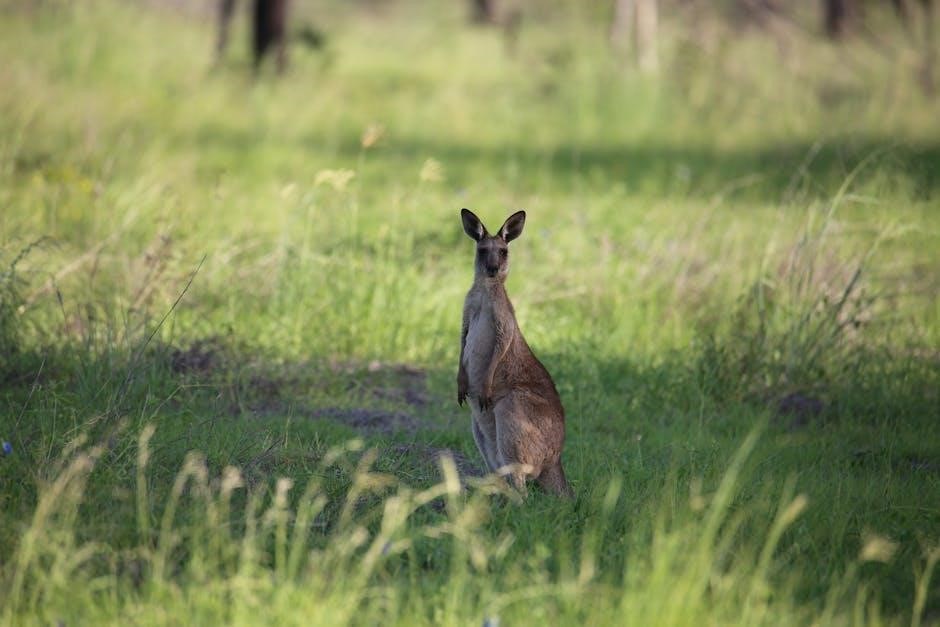
Identification Tips
Identifying Australian mammals requires careful observation of key characteristics. Start by noting the animal’s size, color, and distinctive features, such as ear shape or tail length. For bats, pay attention to their wing structure and echolocation calls. When using identification keys, compare multiple traits to narrow down species. Habitat and distribution maps can also provide crucial clues. Observe behavior, as many mammals have unique movements or vocalizations. For smaller species, like rodents or dasyurids, examine dental patterns and fur texture. Always cross-reference field observations with high-quality images and descriptions to ensure accurate identification. This systematic approach helps in distinguishing similar species effectively in the field.
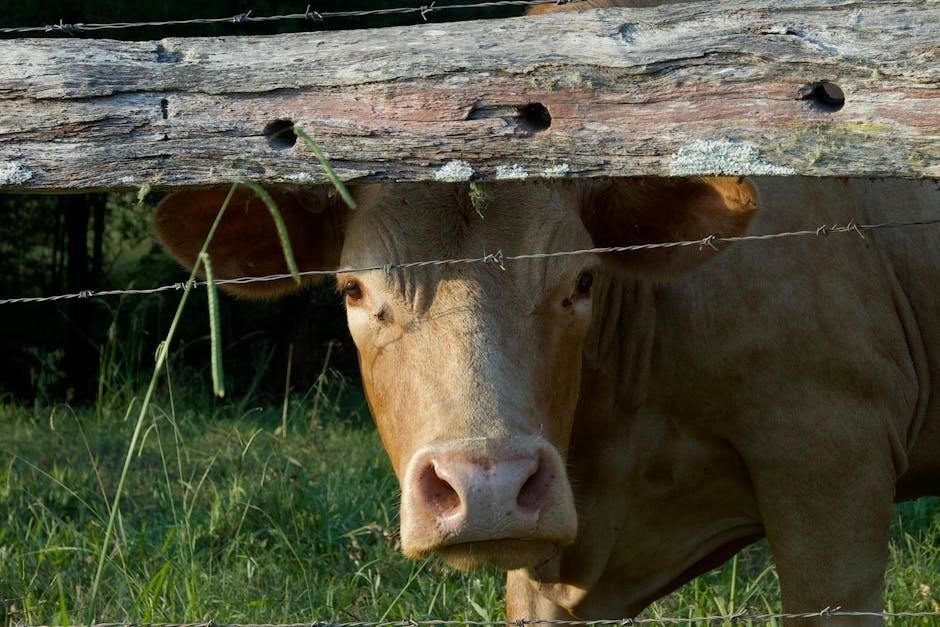
Rodents
Australia’s rodent diversity includes native species like hopping mice and spinifex mice, as well as introduced rats and mice. They adapt to varied habitats, from deserts to forests, playing key ecological roles in seed dispersal and nutrient cycling. Identification often requires examining dental structures and fur patterns, with introduced species typically resembling common household rodents. Their ability to thrive in diverse environments underscores their resilience and adaptability, making them a significant part of Australia’s mammalian ecosystem;
Native Rodents
Australia’s native rodents are a diverse group, including species like hopping mice and spinifex mice. These rodents have adapted to the continent’s harsh environments, with robust bodies and strong hind legs enabling them to thrive in arid and grassland regions. Native rodents play a crucial ecological role, contributing to seed dispersal and nutrient cycling. Their diets vary, ranging from seeds and vegetation to insects, depending on the species. Identification often relies on distinguishing features such as tooth structure and fur texture. Conservation efforts are necessary to protect these unique animals, as many face threats from habitat loss and introduced predators. Their resilience and adaptability highlight their importance in Australia’s ecosystems.
Introduced Rodent Species
Introduced rodent species, such as the house mouse and black rat, have significantly impacted Australia’s ecosystems. Originating from Europe and Asia, these rodents were inadvertently introduced through human activity, including colonization and trade. They thrive in diverse habitats, from urban areas to natural environments, often outcompeting native species for resources. Their presence disrupts local food webs and contributes to biodiversity loss; Control measures, such as baiting and trapping, are frequently employed to mitigate their ecological damage. Despite these efforts, introduced rodents remain a persistent challenge, highlighting the need for ongoing conservation strategies to protect Australia’s unique wildlife and maintain ecological balance.

Unique Australian Mammals
Australia is home to remarkable mammals like platypus, echidna, dasyurids, and monotremes, showcasing extraordinary adaptations and evolutionary distinctiveness that set them apart from other global species.
Dasyurids (Quolls and Dunnarts)
Dasyurids, including quolls and dunnarts, are carnivorous marsupials native to Australia. These small to medium-sized mammals are characterized by their pointed snouts, prominent teeth, and bushy tails. Quolls, the larger dasyurids, are known for their striking fur patterns, while dunnarts are smaller, more delicate, and often nocturnal; Both species are adaptable, inhabiting diverse habitats such as forests, grasslands, and deserts. They are primarily ground-dwelling but can climb trees. Dasyurids play a vital role in controlling pest populations, feeding on small mammals, reptiles, and insects. However, many species face threats from introduced predators and habitat loss, highlighting the need for conservation efforts to protect these unique Australian mammals.
Monotremes (Platypus and Echidna)
Monotremes, a unique group of egg-laying mammals, are represented in Australia by the platypus and echidna. The platypus, one of the most iconic Australian species, is known for its duck-billed snout, webbed feet, and venomous spur in males. Echidnas, covered in sharp spines, use their long, pointed snouts to feed on ants and termites. Both species are found in diverse habitats, with platypuses inhabiting freshwater environments and echidnas adapting to forests, grasslands, and deserts. These extraordinary creatures are a testament to Australia’s evolutionary history and remain fascinating subjects for study and observation in the wild.
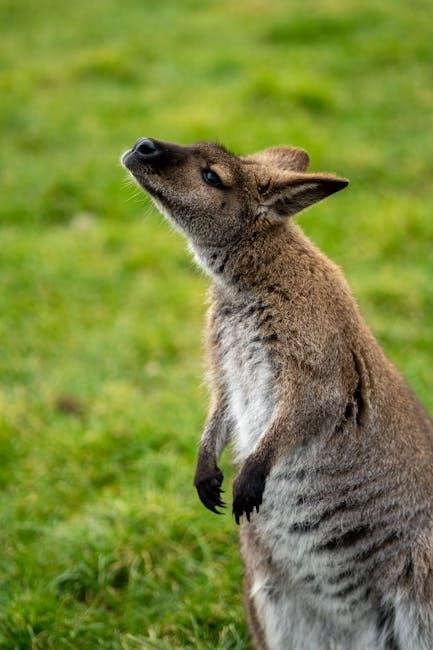
Conservation Status
Australia’s mammal conservation status is a priority due to habitat loss and climate change. Protected areas and reintroduction programs are vital to ensure these species’ survival.
Endangered Species
Australia is home to several endangered mammal species, including the koala, bilby, and quokka. Habitat loss, climate change, and invasive species threaten their survival. Conservation efforts focus on protecting habitats, reducing threats, and reintroducing species into safe areas. Captive breeding programs and community-led initiatives play a crucial role in recovery. These efforts aim to stabilize populations and prevent further declines, ensuring the survival of these unique species for future generations.
Conservation Efforts
Conservation efforts for Australian mammals focus on protecting threatened species and their habitats. Programs like the Threatened Species Recovery Hub and community-led initiatives aim to restore populations. Habitat restoration, predator control, and climate resilience projects are key strategies. For example, koala conservation includes planting eucalyptus forests and reducing urban-wildland conflicts. Indigenous knowledge and scientific research collaborate to develop effective solutions. Public awareness campaigns also play a vital role in engaging communities. These collective efforts are crucial to safeguarding Australia’s unique biodiversity and ensuring the survival of its iconic mammals for future generations. Conservation is a shared responsibility requiring continuous action and commitment.

Habitats and Distribution
Australia’s diverse mammals inhabit varied ecosystems, from lush forests to arid deserts. Their distribution reflects adaptations to these unique environments, ensuring survival across the continent’s vast landscapes.
Forest and Woodland Mammals
Forest and woodland ecosystems in Australia are home to a variety of unique mammals. Possums, such as the common brushtail possum, thrive in these environments, utilizing trees for shelter and food. Koalas, iconic to Australia, are found in eucalyptus woodlands, relying on these trees for their diet. Other species like the sugar glider and mahogany glider inhabit these areas, showcasing diverse adaptations to forest life. These mammals play crucial roles in seed dispersal and forest regeneration. However, habitat loss and fragmentation pose significant threats, highlighting the need for conservation efforts to protect these species and their habitats. Understanding their ecological roles is essential for effective forest management and biodiversity preservation.
Desert and Grassland Mammals
Australia’s deserts and grasslands are home to a unique array of mammals adapted to harsh, arid conditions. Bilbies, bandicoots, and dunnarts are prominent, with specialized traits like burrowing and nocturnal behavior to survive extreme temperatures. These mammals play vital roles in seed dispersal and insect control, maintaining ecosystem balance. Their ability to thrive in limited water environments underscores their evolutionary resilience. Despite challenges like habitat loss and predation, conservation efforts aim to protect these species and their habitats, ensuring the preservation of Australia’s desert and grassland biodiversity for future generations.



